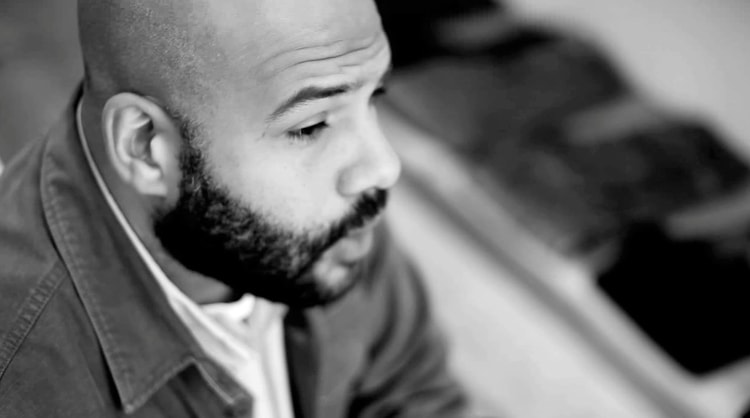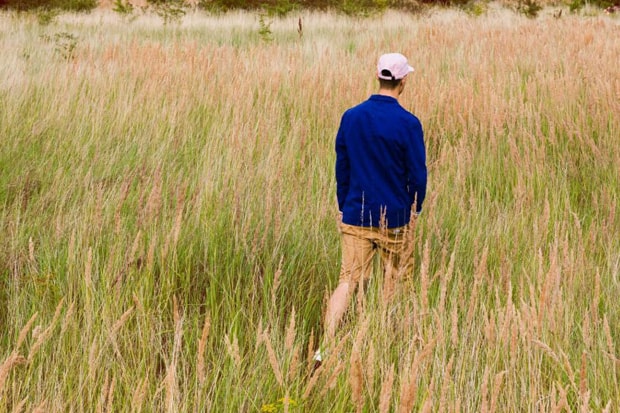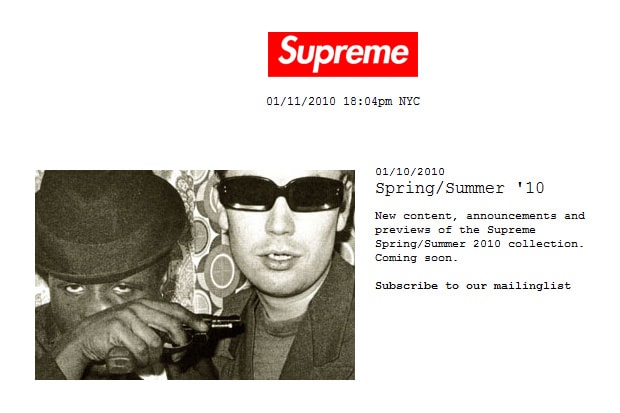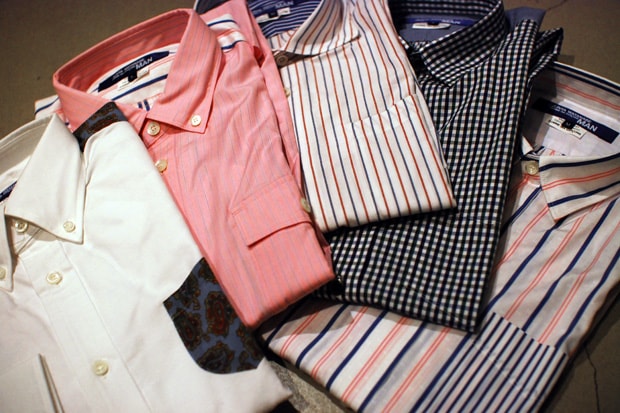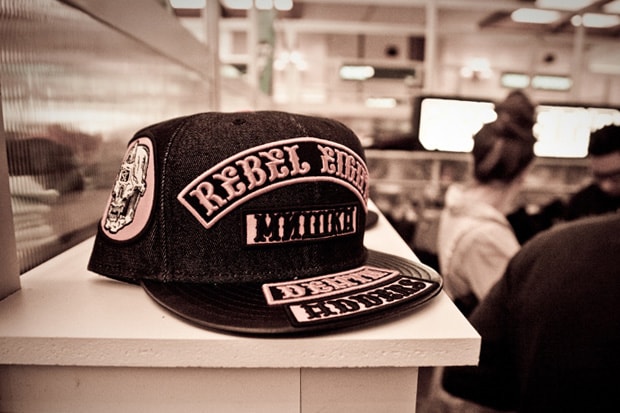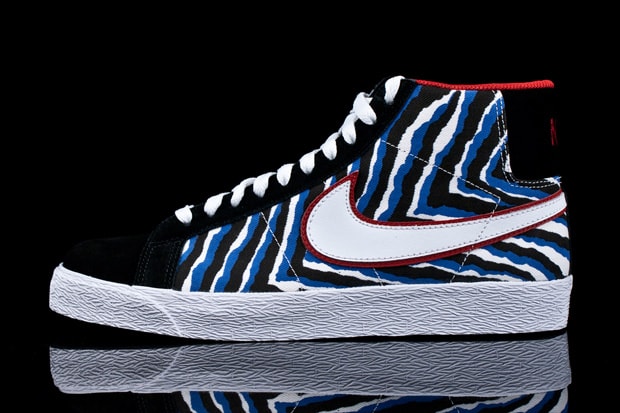Ian Paley: The Globetrotter
One of the industry’s most well-versed and knowledgeable individuals, Ian Paley of Garbstore sits down for an extensive chat into crafts we’ve all become fans of over the years.
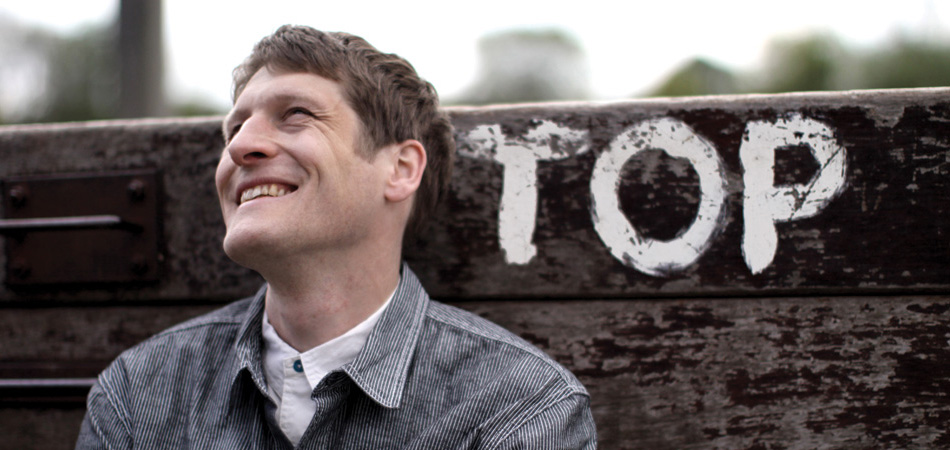
After a brisk meeting set-up through a mutual friend, the next thing I knew I was subjected to quite the lesson from one of the industry’s most well-versed and knowledgeable individuals in Ian Paley of Garbstore. From a background in design, his time with Paul Smith as well as his own successful label One True Saxon has bestowed upon Ian a great foundation ranging from design and production to his most recent gig as shopkeeper for Garbstore. While this interview didn’t take place during our initial meeting, nevertheless a quick few hours of solid conversation yielded an ample amount of thought and inquisition which turned into this subsequent feature. Heavy on heritage fashion, topics ranged from Japanese craftsmanship and its unparalleled approach to the stigmatization of China as a low-quality producer. The feature is intensive, so grab your beverage of choice and settle in.
Interview: Eugene Kan
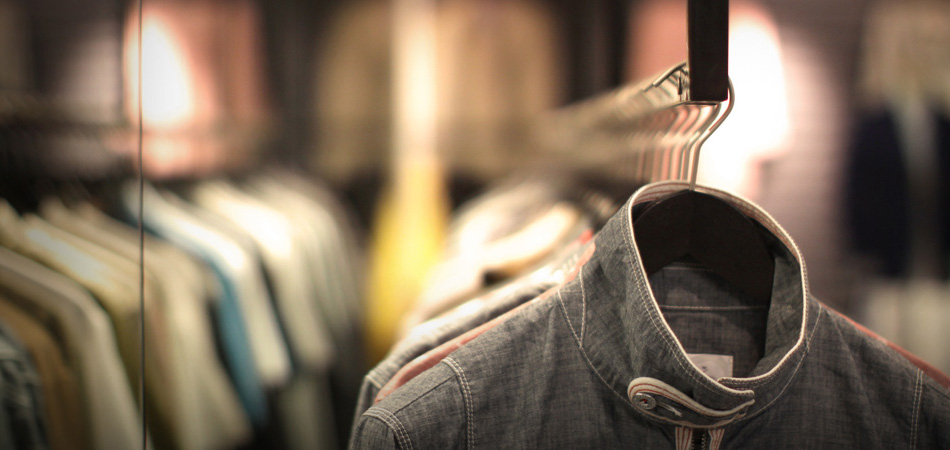
Hey Ian, it was great meeting you in Hong Kong a little while ago. For those unaware, prior to starting to Garbstore, what was your background and what sort of ventures were you involved in?
Hi Eugene, like wise my friend, I started out as the designer for all of the casual wear for Paul Smith in the mid-nineties. At that time I was in charge of a line that still exists albeit only in Japan, R. Newbold, which in so many ways represented reproduction workwear long before the current revival. I then took over the jeans department of the Paul Smith business and launched a line in Japan called Red Ear. This was my real introduction to the craft of making good jeans and weaving great denim. Along with all of the other casual wear it was a great time for me, everything worked, and I was constantly in and out of Japan during a real boom time in the world’s economy.
After that I decided to switch careers a bit and work in advertising after a chance-meeting in Tokyo with Nigel Bogle from BBH in London. I did this for a few years and learned an awful lot from some pretty smart people. I worked mainly with Levi’s at this time and my first day at the agency I designed the branding for a new project called Levi’s Engineering. From there I took on some consultancy work directly with Levi’s in San Fransisco and as a denim head it got me into the archives.
Moving along, I worked with Burberry for a few years, helping them re-launch their casual lines. I remember a freakish presentation in Madrid that had my head floating on 50 large screens explaining each piece I’d done for them. During my time in Spain, I raised enough money to kick start an idea I’d had for a while but not done anything about; and with it came One True Saxon. 7 years of larking about the world with that one brought it to the time where you have to take a bigger step. So the brand was absorbed by a much larger group. I guess I’d been used to doing things my way for so long that I decided that I needed to do something that I hadn’t done before. Open a store. I also had an idea that had been in my mind for too long and not gone away… Garbstore. I put the two together and this is where I am at now.
Cutting your teeth at Paul Smith and then various other high-profile brands such as Burberry along the way, you must have been well-prepared to start your own brand. What aspect of fashion initially drew you in? Was the transition from working for somebody to being your own boss at One True Saxon a smooth one?
I suppose growing up in the midst of casual culture in the late seventies was my hook. That’s the area of clothing I was interested in, searching for old Levi’s and Timberland, but also embracing some of the more avant-garde labels of the day. It was growing up in the north east of England in a football dominated town that really set the scene for me. I was big into the Euro casual labels like Chipie, Chevy, Liberto, Valentino jeans etc.. all about due for a revival. But also the more US-based stuff in the early eighties was a huge inspiration. I suppose that’s really when I started to move away from the football scene and become more interested in American labels and clothing.
I think the transition from working for someone to being your own boss is always a very smooth one, the other way around normally causes the problems. It’s funny, I remember quite clearly questioning every design, every colour, every decision, simply because it was my own money that was being spent. It’s actually very easy to be creative with someone else’s money, but not so much your own.
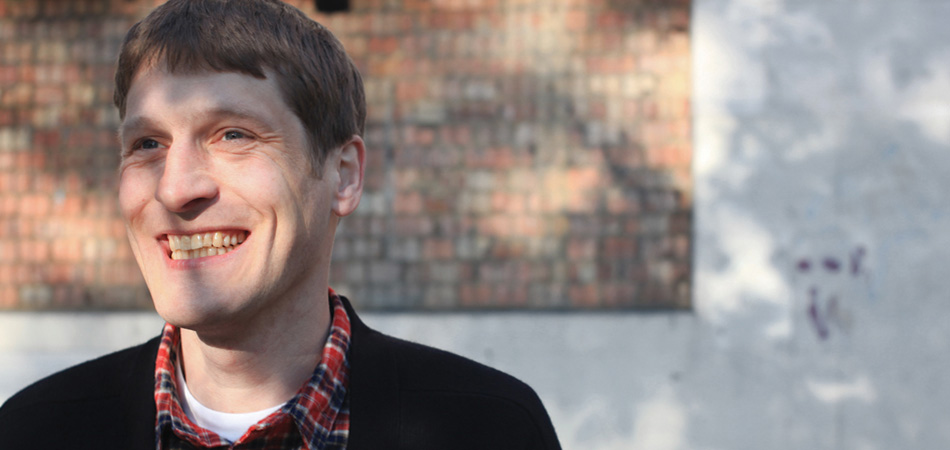
With your inspirations and interests in fashion changing over the years, when would you think you established your own personal design language? From the looks of Garbstore’s roster of brands and in-house label, it would seem to be more rooted in your love of American labels?
The design language you speak of actually has more to do with the time I spent in Japan looking at American heritage reproductions. The best American stuff is re-made and improved by the Japanese because of the superior construction techniques and buoyant domestic textile industry. But you are right, the abundance of heritage comes from a love of very successful societies, The US went through a very fast transition of industrial growth and as such had a great deal of small local suppliers that had an instant market, Also due to the size of the country, its working men had a lot to do with transportation, rail, and shipping, which contributes to their overall aesthetic. Here in Britain we dominated the world’s industrial scene for so long that actual uniform and necessity of use for those uniforms didn’t really change so much. France had a very similar outlook with more of a lean towards agricultural work wear, so I guess the language we have here is always growing and changing as we learn about the industrial heritage of each country. The mix of Japan’s domestic industry and the rich vein from the US is a pretty good place to start. In the last couple of years, or so, we have spent a lot of time in the South of France, researching 20’s and 30’s agricultural work clothing for inspirations into our own designs.
With this great renaissance in workwear and mountaineering aesthetics, arguably led by a handful of Japanese brands in the past, and more notably with original purveyors re-emerging, where do you find the proper relationship between authenticity and fashion. Do they necessarily need to go hand-in-hand when re-appropriating the past… or is the fact that Japanese simply find inspiration in something that isn’t inherently part of their past culture something we can overlook in the name of fashion itself?
I think it’s important to understand just how far ahead the Japanese aesthetic is. In Europe and more so the US there is a feeling of reclamation back from Japan. Original ideas that are being presented as righteous or “owned” ideas by European and American brands. This is nearly always coupled with the notion of domestic manufacturing, often disguising inferior product because of the forced romance of it’s origin. The Japanese focus far more on the product, including the minor nuances of construction, quality of zips, reproduction of fabrics. They are forced to re-imagine the garments by dissecting each part and re-making the original patterns to fit the Japanese frame, I think it’s this part of the process that facilitates the knowledge and helps them produce such outstanding pieces. The current revival in heritage fashion is one that has been constant in Japan for as long as I’ve been traveling to the country.
Quite often with a little bit of digging you can find exact versions of current products being offered out side of Japan by the current crop of brands, only they did it years ago, for a better price, in better cloth. There are a few core brands in Japan that avoid the whole hype scene that have really pioneered this whole movement and rarely get the credit for it. In terms of fashion, this whole area has developed from a very non-fashion point of view. The fashion is in the passion for the details and the addiction to the heritage, not an aspiration for any sort of trend or look. Just a shear love of authenticity mixed with the desire to improve and move things along. For my own line, we look at historical pieces, imagine them sitting on a shelf in a hardware store and try and design the things that would be to the left and the right of that piece on the shelf.
As you’ve mentioned, Japan has been maintaining this particular love of heritage clothing for quite some time. How does a more global trend of heritage clothing affect the Japanese market in your eyes, if not at all? And with a general inspiration revolving around this particular style rooted of clothing rooted in the past, how does one continue on designing 1, 5 and 10 years down the line without re-creating an aesthetic that is all too similar season to season?
The current trend in heritage fashion poses little threat to the Japanese market. It’s a trend that’s primarily based on the acquisition of knowledge, that extra worth in product that’s needed during a recession to back up the idea of a more considered purchase. The thirst for knowledge isn’t something that’s new to Japan in many ways. They are the insiders on this trend, a bit like the factory owners who are completely oblivious to the current crop of fashions whim. Hopefully the global restoration of this trend will evolve much in the same way as the Japanese market has over the last 10 years. I think that both in the US and in Europe, the scope of this trend will never upgrade to anything other than niche. More established designers will re-interpret all of this in a more paired-down simple way, where heritage is nothing more than an ingredient. For so many companies just getting to that vintage standard is hard enough, to move beyond it? Well we’ll see if we can all measure up to what the Japanese have been silently doing for years.
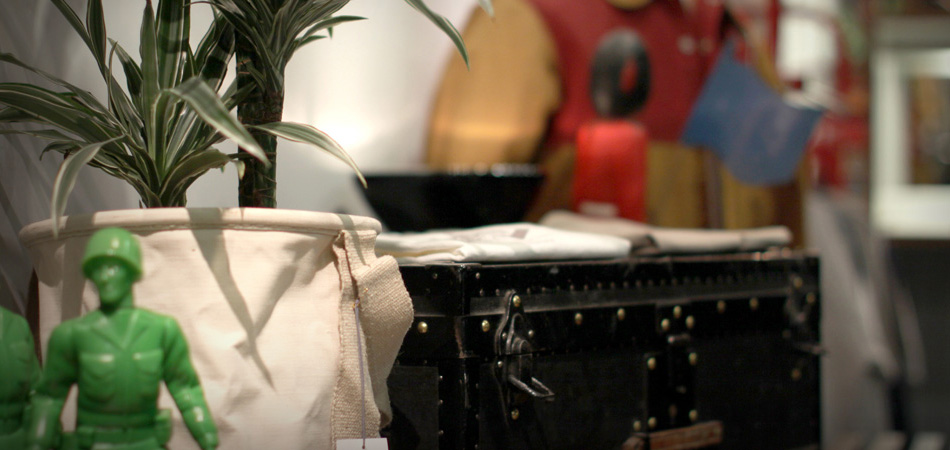
Changing gears to a retailing perspective, what’s the Garbstore philosophy on bringing in brands? Have you come across brands you really like but for the sake of not being synergistic enough had to decline?
The funny thing about this recession is that we all think there are so many good brands to choose from. The overall widening of the Japanese aesthetic has really led people to create garments rather than stories. Usually if we like it enough, we try it in the store. But for us it is also about common sense, you can create a perfect brand, with perfect product but if the price is crazy then for us it’s just not worth it. Even though we import a lot of items from Japan, we believe them to be the best and know the way they are put together, rough fabric costs, etc. So it’s easy for us to look at something and know if the price tag reflects the sum of it’s parts. Especially now some of the prices around reflect one of 2 things, a good price with surprisingly good value and upon closer inspection reveals an average quality plus an inferior make. Or a ludicrous price which is essentially all factory surcharges for low quantities… there is a lot of this about at the moment. Workwear is workwear and the luxury ceiling of the trend is definitive for us. We decline an awful lot of great stuff, in truth we like the people we deal with and most of the things we do at the store are from friends I’ve known for a long time. Occasionally we take on something new, it’s a big deal for us and we have to be excited by the product no matter what it is.
When you say that the widening of the Japanese aesthetic has made garments more so than stories, what exactly do you mean? It also seems that a design background is probably quite helpful in engineering the costs/value of an item… something I’m sure every good retailer should take note of. When you go to the drawing board for Garbstore as a brand, is it hard to not be overly influenced by the brands you’ve chosen to stock in-store?
I think that the introduction of Japanese product albeit very slowly into the Western market has raised the standard of design versus production. 10 years ago in the market place, quality had very little to do with sales, it was more about names and labels. The idea that you can re-design a heritage product well can only stem from a culture that has an ultimate knowledge of heritage clothing. I think with the current crop of heritage-inspired labels we are seeing this aspiration to the the sorts of products Japan has been producing for a decade.
In terms of how we design Garbstore, it’s a creative handwriting that has developed from the first ever collections I produced for Paul Smith. Really I think you can go through a lot of the things I do together, rip out the labels and they all have something in common. A lot of rare vintage is always in our sights and we collect an aweful lot of stuff, this is how we start the process. The time frames of retail don’t really allow us to be influenced by what we see… we have yet to go to any of the SS10 exhibitions from our friends in Japan (based on the time of the interview), we have finished development for AW10! Occasionally we do see crossover. I came across a lovely 20’s Cadet wool coat in NYC a few years back that I wanted to reproduce in some form. Koba from Mountain Research came across the same one and re-made it for his Naval research line which we bought for the store. Right now we have some cut-away jackets and Norfolk jackets from both ……. Research and Engineered Garments, basically they are the same style but it’s really good for us to see the huge difference in how they are made to provide a very different effect when worn.
When we originally met up back in Hong Kong, you mentioned that you were the lone account that had specific pieces cut to your specs with Deluxe and Bedwin. Japanese sizing throughout the rest of the world has often been a touchy and difficult subject, do you feel that a better global presence and greater success is at the end of the tunnel if more Japanese brands cut themselves more towards the sizings of the Western market?
It’s something we addressed right from the start with all of our Japanese brands. As long as you know how to change things then it’s really not too hard with the generosity and help of the brand to add extra sizes that are cut to a more European frame. I’ve been very lucky that the guys I deal with do this for my store. The bottom line is the clothes have got to fit. You know Japanese factories are quite flexible and are used to making quite complicated garments. As long as you make 6 pieces as a cutting minimum, from what I can gather, things can be done.
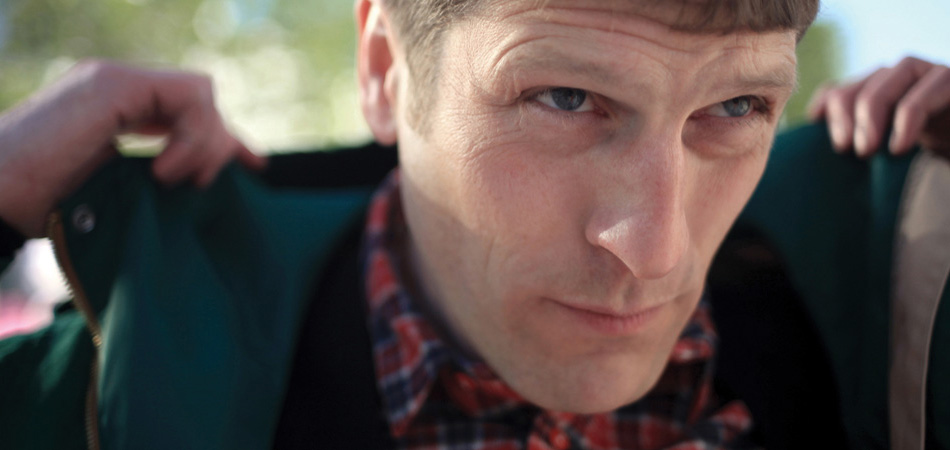
Given the relative ease in creating more Western-friendly sizing, you’d think there would be greater diversity in size offerings. Touching upon Japanese factories, how do you think they are handling the influx of Chinese production over the last few years. I know you’ve mentioned that the low costs associated with countries such as China coupled with Japanese business interests, these markets have ultimately yielded some positive outcomes.
These things are only easy if the brand has that very non-Japanese business model of the owner doing everything! I’m not a factory owner so I can’t really comment on how they are doing. The interest has to be in the joint ventures that are popping up all over China, really the best of both worlds. You know when you are the top end of the market there are only certain factories that you can use. China has really embraced the idea of specializing. Most of the industry knows that mass production has moved on to other countries but where China is smarter is that they are encouraging to create joint ventures and to specialize production that can cater for the standards required for high end products. Already the benefits for these ventures are clear. The economy of Japan is really languishing in the sort of debt that requires the sort of fund raising that only sir Bob can muster up. It’s a deep deep hole that hopefully the new thinking in working with China will help them start the long climb out of the domestic black hole they are in. In terms of costs, at our end of the market there are no low costs, and again for this type of product it’s a misconception that it’s cheaper to make in China. My old man used to work in the TV manufacturing industry and I remember clearly when Japanese products started appearing in Europe in the late 70’s they were lambasted as poor quality, cheap inferior goods. Of course it was untrue, it was a simple sound bite that is/was easy to understand and easy to take on as opinion. I think with everything that is going on we are reaching a similar turning point of opinion. In terms of producing, there is really no better place to produce a premium quality product with fabric rooted in Japanese mills, skilled workmanship and a deep knowledge of craft and construction that has come from the roller coaster that the Chinese garment industry has traveled on.
We’ll see by the time China shakes its stigma of low-quality goods, whether or not the focus will still be on lower-tiered and relatively low-skilled productive versus more technology based angles. Regardless, I think that China’s production means are there, but you just need to sort of guide them along the whole process. From a design point, what aspect of fashion do you enjoy designing the most whether it be bags and accessories, footwear or outerwear? Any particular reason why?
Any chance I actually get to sit down and be creative. It’s almost impossible to allow yourself time to really scrutinize what you do. Designing shoes is a real treat for me as I’m not trained to do it but have learned a lot working with some good factories over the last few years. I once also designed a range of watches that I particularly loved and could easily see myself in and shed up a mountain somewhere tinkering with the innards of time. Well executed details in any product always attract me.
So having finished off with that last line… when will we see you holding the title of Ian Paley the furniture designer or something to that effect?
I suppose it has a lot to do with getting older, you tend to invest in products that are more considered. I’m a huge fan of Charlotte Perriand & Jean Prouvé. I guess furniture in general is pretty inspiring because it has to be 100% successful to be a definitive product, something that you can use everyday that just gets better and better. I also really admire what the guys at Linde Werdelin are doing with their new watches, I’m a friend of Jorn the owner so I always get a sneak at what’s coming and it’s hugely inspiring.
As we round out this interview, you’ve inevitably had some great experiences involving various facets of fashion. What would you say are some of your most important revelations and advices you’ve come across pertinent to the fashion and retail industry?
It would be something that I admire, desire and appreciate even if it’s outside of my comfort zone. In truth, I would love to be in product design because when you get it right, it’s done. I think our little world changes too quickly which is not always to it’s benefit. Daily it becomes clearer that we are moving back to a direct-to-customer system, whether it is via your own store or online. I think you have to believe that no one can explain your ideas better than you can and there isn’t really a better time to set up shop. People need to believe that they are buying into something that is real, it exists, you can probably generate a staggering amount of press and chat online about a product that in reality doesn’t really need to actually exist. After all, the need to “talk” about products has sadly replaced the need for wearing them. My advice in all aspects of the clothing industry is to track down and try on.
Thanks a lot for this insightful talk and best of luck with everything surrounding Garbstore.







